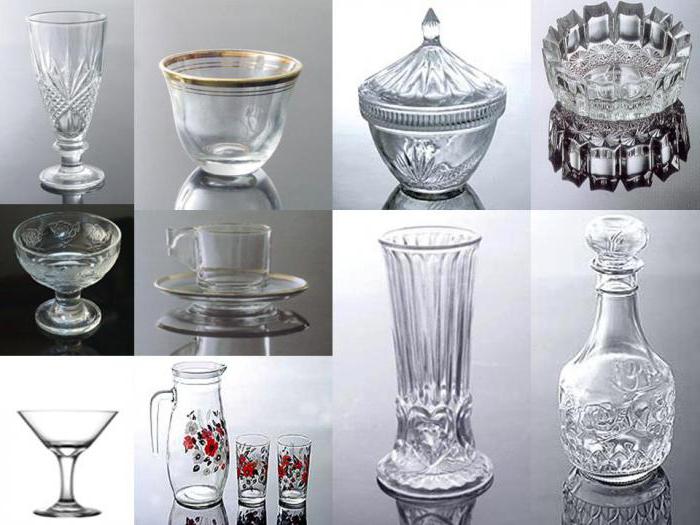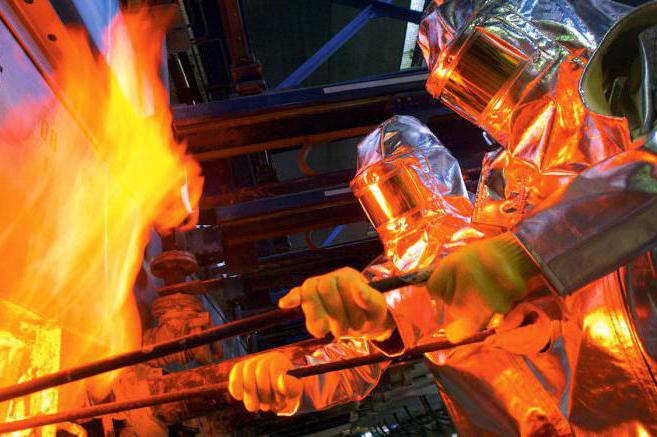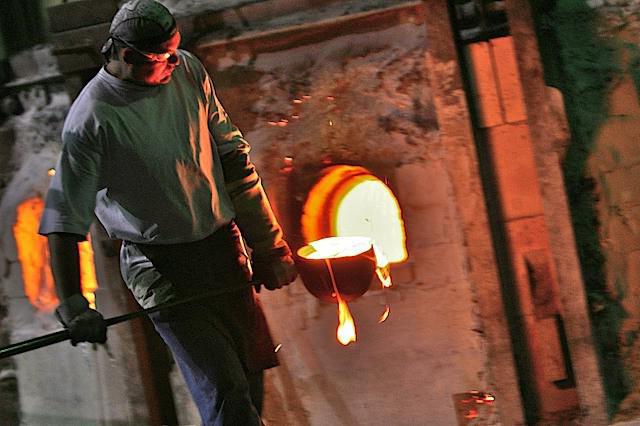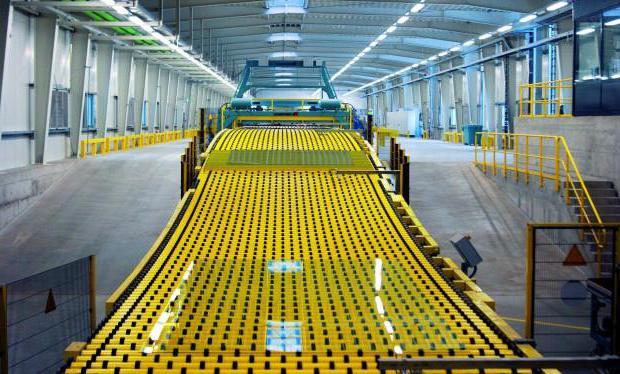Items created from glass can be seen almost everywhere now. The history of this material has more than 5 thousand years. Ancient people used not the most useful things in the household made from it. It will be more than one millennium before a person guesses to create more functional products. He will be able to establish glass production, using specialized equipment.
Line of business
The glass industry has received good development in recent years. This is due to increased demand from the population. In order for the final product to be of high quality, attention should be paid to the chemical formulas necessary for its production. A considerable investment of funds is also expected. The last paragraph is the reason that entrepreneurs often refuse to manufacture this material and switch to its secondary processing.

What can be made of glass?
- mirrors;
- various souvenirs;
- products used in the furniture industry;
- components of windows;
- dishes and various containers.
Big investments should be prepared before starting your own business. In modern conditions, the production of glass can be associated with certain difficulties. For a mini-business, recycling is more suitable. Similar products are also in demand. Experts recommend paying attention in this regard to the furniture industry.
Story
Glass production in the 18th century acquired industrial proportions. After another century, a mechanized method of creating sheet products was developed.
Initially, raw materials were taken and smelted. As a result, it resembled a sticky mass. With the help of special rollers, the material was thinned. Following this, the base was cooled and divided into sheets. They could be a certain size.
More sophisticated methods of processing materials came up about 50 years later. The so-called float technology was introduced by the company, which later became known throughout the world. What was the process based on?

Sheets were formed in a special tank. At the time of receipt, it already contained molten tin. The two substances did not mix. On the contrary, glass, the production of which was carried out in this way, was evenly distributed over the metal. This ensured smoothness of the material; moreover, this method excluded the appearance of bubbles in the structure. The resulting mass cooled gradually. To prevent cracks in it, the sheets were sent to the system of rolling rollers.
At the final stage, the web was cut into sheets of the required length. Excess fragments containing traces of the rollers were removed and sent for re-melting.
What are the advantages of such glass production? Thanks to him, you can get almost any thickness of the product. The thinnest sheets are made as a result of using the minimum amount of raw materials sent to the bath from tin.
Methods of obtaining material
The following types of glass production are distinguished:
- Float mentioned above.
- Fourco.
What are the advantages of the first technique? There are several of them:
- a completely smooth surface is formed, so polishing is not needed in the future;
- the sheet has a uniform thickness over the entire area;
- excludes the presence of inclusions such as bubbles, shells and cavities;
- The technology is characterized by high performance.
Float technology has greatly expanded the capabilities of architects and representatives of other specialties. More varieties of glass appeared, and they began to use it with a decorative purpose.In the future, people came up with technologies to improve the characteristics of the material: grinding, matting, etching, etc. It began to acquire new properties, became resistant to mechanical stress, weather conditions, etc.

The second technology for the production of glass (furco) involves a slightly different algorithm of actions. The mixture is hot through the rollers. After that, it is transferred to a special chamber for cooling. Here, the resulting material is divided into sheets.
Raw materials
What can serve as raw materials for production? Most often it is sodium sulfate, quartz sand, dolomite, limestone. The process is significantly accelerated thanks to the so-called charge. Special oxides promoting glass formation may be present in it. They are, in turn, basic and acidic. Auxiliary components are also needed so that the resulting substance has certain properties. Among these additional ingredients are:
- coloring matter (based on manganese, chromium and cobalt);
- clarifier, the role of which is arsenic trioxide or nitrate.
The technology provides for a number of sequential actions:
- preparation of the mixture;
- glass making;
- the manufacture of various products from the resulting material.
Even a slight change in the algorithm of operations can lead to the production of glass of a completely different structure. Acquisition of a more cellular or dense structure is possible.
Glass production in Russia and its features
Technological processes must be carefully monitored! To ensure that the situation does not get out of control, pay attention to the temperature of the glass and conveyor.

Sprues are used to transport material. The plunger creates a special ball that ends up in the molding machine. It is also called a "drop of glass." Its condition must be monitored, because a characteristic such as viscosity depends on it. The same can be said about the quality of the procurement of products. It is recommended to use a non-contact type infrared camera for more convenient control of “glass droplets”.
Gas burners are used to heat the conveyor. This ensures uniform cooling of the workpieces. They move to the glass-forming machine in the future. If all recommendations are followed, manufacturing defects are excluded. Tracking the conveyor temperature is of great importance to any entrepreneur. This should be done at regular intervals. The more responsible you are about these points, the more profitable your activities will be.
What equipment is required?
In order for your business to work efficiently, the following objects are required:
- charge mixing plant;
- factory building supplied with electricity;
- boiler room;
- distribution station;
- repair shop;
- high-altitude tank filled with water;
- mixing station;
- installation for reverse cooling of hydrogen and nitrogen;
- fire reservoir;
- battery installation;
- equipment for the production of nitrogen and hydrogen;
- laboratory;
- equipment for the production of compressed air;
- installation for cooling water, as well as its circulation;
- several warehouses, including for spare parts;
- separate territory for storage of containers;
- administrative buildings;
- smoke exhaust pipe.
From a businessman who started the production and manufacture of glass, it is necessary to have devices for creating a charge, as well as mixing the ingredients. You will also need equipment to weigh these very components. Two special bunkers are allocated for basic raw materials. We are talking about materials such as sand, dolomite and soda. The remaining components are used separately.
Some production features
Bunkers that are loaded pneumatically have filters. The filling level is controlled by a special device.In order to get the contents out of the container faster, production owners use scraping devices. Container scales allow you to measure the mass of materials.

Having determined the weight of each component, you can send them to the mixer. In a number of rooms, a large amount of dust is generated. To protect workers, it is necessary to install plants that will assemble it.
The mixture in finished form leaves the mixer. Through the metering trough, it moves to the conveyor. Glass breaks are constantly added to it.
Varieties of glass
Depending on the components present in the charge, the following types of glasses can be obtained:
- quartz;
- ordinary;
- borosilicate;
- crystal.
The first type is the most common. Products made from it have excellent resistance to high temperatures. They are transparent, but still not strong enough. They can be used in laboratories for mixing chemicals.

Another variety is present almost everywhere. This is a sheet glass made in Russia. It can be seen in store windows, window structures.
Material for the manufacture of glass containers is created in several ways:
- pressing;
- blowing, including manual blowing;
- centrifugal casting.
Glass: production, classification, purpose
The classification of glass is based on the direction of its use. In this regard, its types are distinguished:
- household;
- construction;
- technical.
The first type is used for the manufacture of containers and souvenirs. The second variety is used in the medical industry. The third category is necessary for creating stained-glass windows and manufacturing windows.

Classification by type of processing:
- Grade 1 - mechanical action is carried out: engraving, matting,
- Grade 2 - the material is stored unchanged.
- grinding.
- Grade 3 - glass is rounded or beveled, i.e., cold worked.
- Grade 4 - products undergo acid matting, etching and other chemical influences.
- Grade 5 - a special coating is applied to the surface of the material (film, spraying).
Final tip
As you can see, glass production is not as simple a business as it seems. You should pay attention to a large number of important nuances. It is permissible to give more specific recommendations when the entrepreneur has decided on the direction of his activity. It can be sheet glass production or any other narrow specialization. After purchasing the equipment, it is important to conduct timely preventive measures. This will avoid premature wear of its constituent parts and extend their service life.








